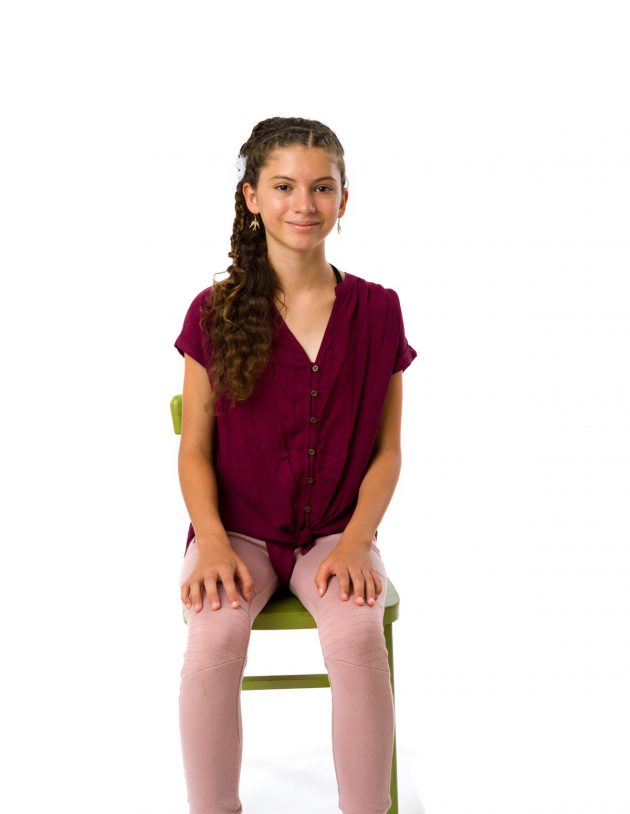“Give It A Try” So simple yet so full of power – yet so scary for some of us.
This morning I was fortunate enough to attend a conference at our local Board of Education for my son. This was specifically for Special Needs Parents but one of the breakout sessions I attended was on Anxiety and Children and the presentation was given by a School Psychologist and Behavior Coach.
One of the many parts that struck me was the simple fact that when we shy away from our fears, how much they intensify and can worsen. But what is so incredible is that we have the power to help children navigate away from anxiety and offer them concrete tools to manage this and even thrive. What an amazing gift! To support children and help them face their fears, feel safe and balanced and build on self-confidence and their own inner strengths. (now I am excited)!
Easier said than done though, right? Definitely. I thought this might be an area where many people have some sort of interest so I wanted to share 5 tips to HELP SUPPORT kids with anxiety.
(One last thing before I begin – Daniel Siegal and Tina Payne Bryson's, “The Whole Brain Child” couldn't support this any more. Their book is so HELPFUL in teaching parents and caretakers how to help kids grow in such a positive, powerful, and successful manner -physically and mentally. If I could buy this book for everyone, I seriously would.)
5 TIPS TO REDUCE ANXIETY AND REGAIN BALANCE AND CONFIDENCE

1. Identify anxiety triggers
2. Develop self-talk to reduce anxious feeling
3. Learn relaxation skills
4. Expand assertiveness
5. Realize that story telling = Time for processing
1. ID anxiety triggers: Notice what sets your child's anxiety off. Become clear on this as much as possible. Write things down and log the child's actions for better understanding. Often the signs are not clear even for the parents. But you need to do your best to investigate this. Look for patterns such as certain times of the day. Notice the clothes they wear. If their mood changes gradually or quickly. There are many things you may think aren't relavent but once you look at a log of facts, a lightbulb goes off and things become more clear about the child. If you have the opportunity, talk with the parents. Get any inside scoop that you can, as all information will be helpful. For example, one parent wrote me a note (which as a teacher I highly recommend and can be so informative for many reasons). This mom happened to write about 5 sentences helping me to know her child better. The note included what her daughter enjoyed playing with and a few of her favorite things, but she also mentioned that she was very frightened of thunder and lightning storms. Months had passed and one day in class this little girl was definitely off her game and I couldn't figure out why she suddenly shut down. Then I remembered her mom's note and it hit me that she probably didn't sleep well the night before because of the rainstorm and that she simply needed her own time to just be in a comfortable place where she could feel safe.
And if a child feels a need to withdraw, my suggestion is to just let them. To me, they are showing (and telling) me that they need a break. My job is clear. I am here to make sure that I kindly and consistently let them know that I am (and the class is) not going anywhere. When they are ready to come back I welcome them and we will continue on. If they stay on the sides, I will continue to check in and invite them to join us when they feel ready or I ask them to come sit by me on my mat. But this stays the same. I am here no matter what, I am not going anywhere, and when you feel okay in your mind and body we can pick up where we left off.
2. Develop self-talk to reduce anxiety: Bring up the feelings that cause the anxiety while the child is in a good state of mind (i.e. rested, fed, etc). Have a conversation about the feelings like asking, for example, why they are nervous to go up to other kids and play with them. Help them to understand their thoughts and that it's okay to have these feelings. Maybe offer a story that you experienced in a similar situation so they can see that you and many other people have feelings just like them. Discuss the outcomes and make it known that you are there for them. This shows that you are a safe place for them to go to. Be consistently present and truly listen to how they feel. But again, try to allow them the safe space to tell their story. This also brings the anxiety to a closer-to-deal-with reality. By talking through the feelings the anxiety becomes more manageable and it offers a starting place to begin dealing with it rather than using avoidance. Teach them that their feelings do not own them. Teach a child that with practice we can change our thoughts to help us rather than hurt us. (“The Whole Brain Child” can help greatly with this conversation.)
3. Relaxation skills: Jennifer Cohen Harper's Book, “Little Flower Yoga for Kids”, has so many helpful exercises as well as our Little Flower Yoga Blog. Practices include: breathing, listening  meditations, yoga nidra, yoga poses, essential oils, bubble baths, lying in a hammock – whatever works for your kids!
meditations, yoga nidra, yoga poses, essential oils, bubble baths, lying in a hammock – whatever works for your kids!
4. Story telling: “The Whole Brain Child” can offer a lot in this category and what it is, is simply story telling! Allowing your child to draw pictures, talk, sing, etc. gives them the opportunity to talk about what happened which is so (super) important. This allows for the brain, the body and ultimately the child to understand fully and deal with what happened. Example: Johnny, can you believe it? You went and talked to those kids on the beach all by yourself! Can we talk about it? (Allow at least 8-10 seconds for your child to answer). Tell me how it went? (Wait and allow your child to think and answer). Was it scary or did you feel okay? (Allow time for the child to answer). Do you feel really great about yourself? (Allow time for the child to answer). The main take-away here is to let the kid do the talking as much as possible.
If there is an area that the child didn't like and you see they don't want to talk about it, you can help them verbalize it and get through that part. But the end of the story is important: REINFORCING that everything turned out okay! They are here, they are alive and well, they lived through it and they are talking to you. Help them notice and feel that success! Even if maybe a scary part did arise, talk through it and end with the important part that they survived and all turned out A-Okay.
5. Expanding assertiveness: Support your child/children in branching out more. Avoidance enhances fear. Baby step your way to helping them get out in life and face their fears. Set them up for as many successes as possible. Unfortunately, we can't be there 24/7. They will learn much more by us giving them the space to go out and experience the world.
Go and give it a try!
I forgot one thing – One take-away from today that I thought was sweet and we are going to start in our house: At dinner time light a candle (battery or real) – you can make it by having the kids place stickers on it, etc. The point of the candle is while you have a family dinner, you light the candle and each person brings up something they are proud of. Even if you have a one or two-year-old you can include them in this by helping them say just one or a few words to be a part of the forum. It's a great way to bond as a family, show how dinnertime is for being together and talking to one-another and highlighting something pleasant from their day. And feel free to improvise!
Remember you are not alone. Taking care of kids is crazy difficult and you don't have to do it by yourself. Feel free to write in and vent or share your stories, privately or publically.



















